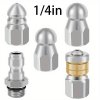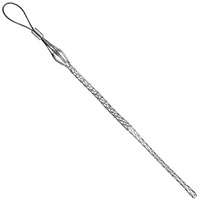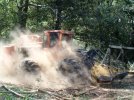treemuncher
Senior Member
![IMG_20240206_132812_807[1].jpg IMG_20240206_132812_807[1].jpg](https://www.heavyequipmentforums.com/data/attachments/289/289384-ad1932b2a0953e360fc00c2419ae739d.jpg)
I just replaced a smaller diameter (1/4") hydraulic hose on my Barko 937. Of course it happens at the furthest point back on this job, over 2 miles away from the closest point that I can 4x4 my service truck into! It was the LS line going from the front section valve body to the pump demand control block in the rear. As manufactured, ALL smaller diameter hoses going from the front to rear sections are encased in a heavy, woven nylon sleeve to prevent chafing and abrasion. The problem I've found is that these sleeves have filled with thousands of hours of fine dust/debris that tightly encases the hoses within. And the sleeves tend to wad up into an accordian shape, creating and even tighter bind on the hoses. Aside from removing the entire multi-hose assembly and cleaning out the debris, I don't see any easy way to repair this situation. Removing a damaged hose is very difficult and installation of a new hose is on the impossible side of the spectrum, even with one of my custom built hose pulling cones. The fabric sleeve just wads up and won't allow passage of a replacement hose.
Any better methods of replacement other than single routing the new hose? I'm open to suggestions!
Before installing the new hose as a stand alone, I remove the old one to make more room in the pass through holes. I have to use a long tapered punch with hand pressure to make enough room for the new hose to slide into next to the existing hoses/sleeves. I encase the new hose with a tight layer of plastic spiral wrap to prevent abrasive wear and make installation a little bit slicker. Once I've repositioned enough of the existing hoses about with the large punch, I can make the install of the new hose with relative ease. I just wish that I had monkey arms or that Barko's engineers had a bit more forethought in their machine's maintenance design features. This "simple" repair took wayyyy too long to get accomplished.



